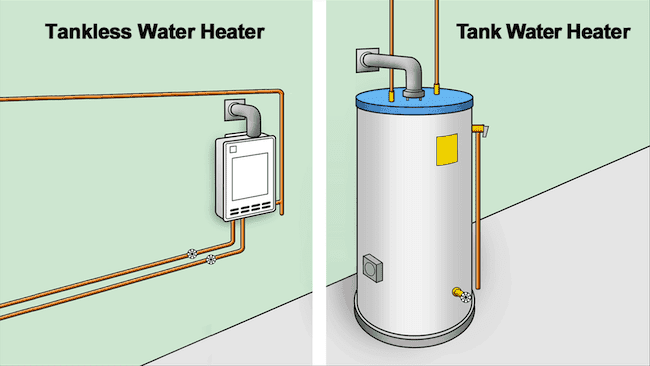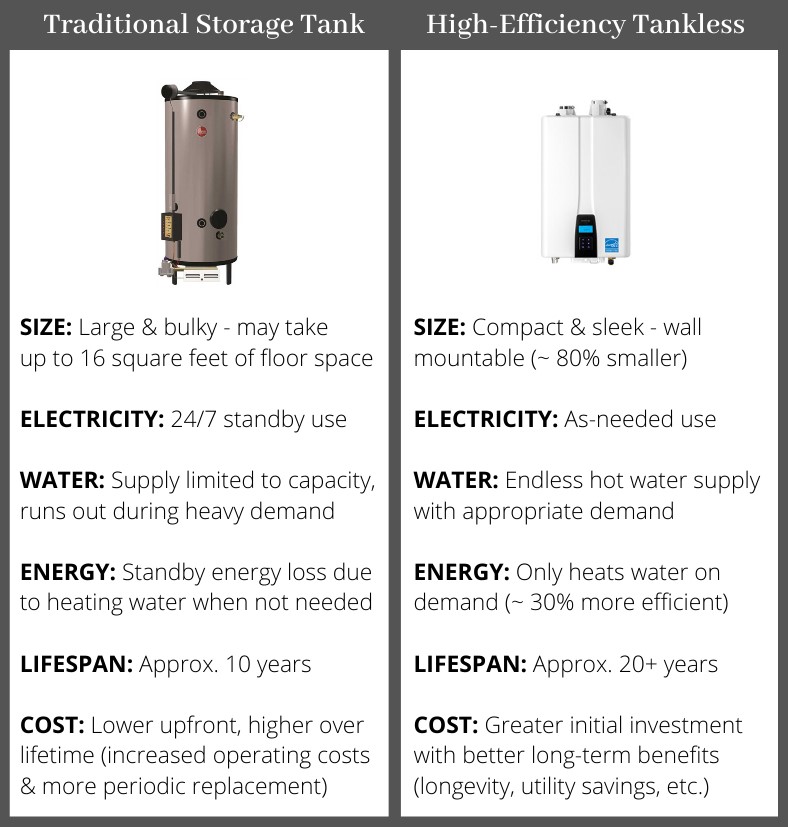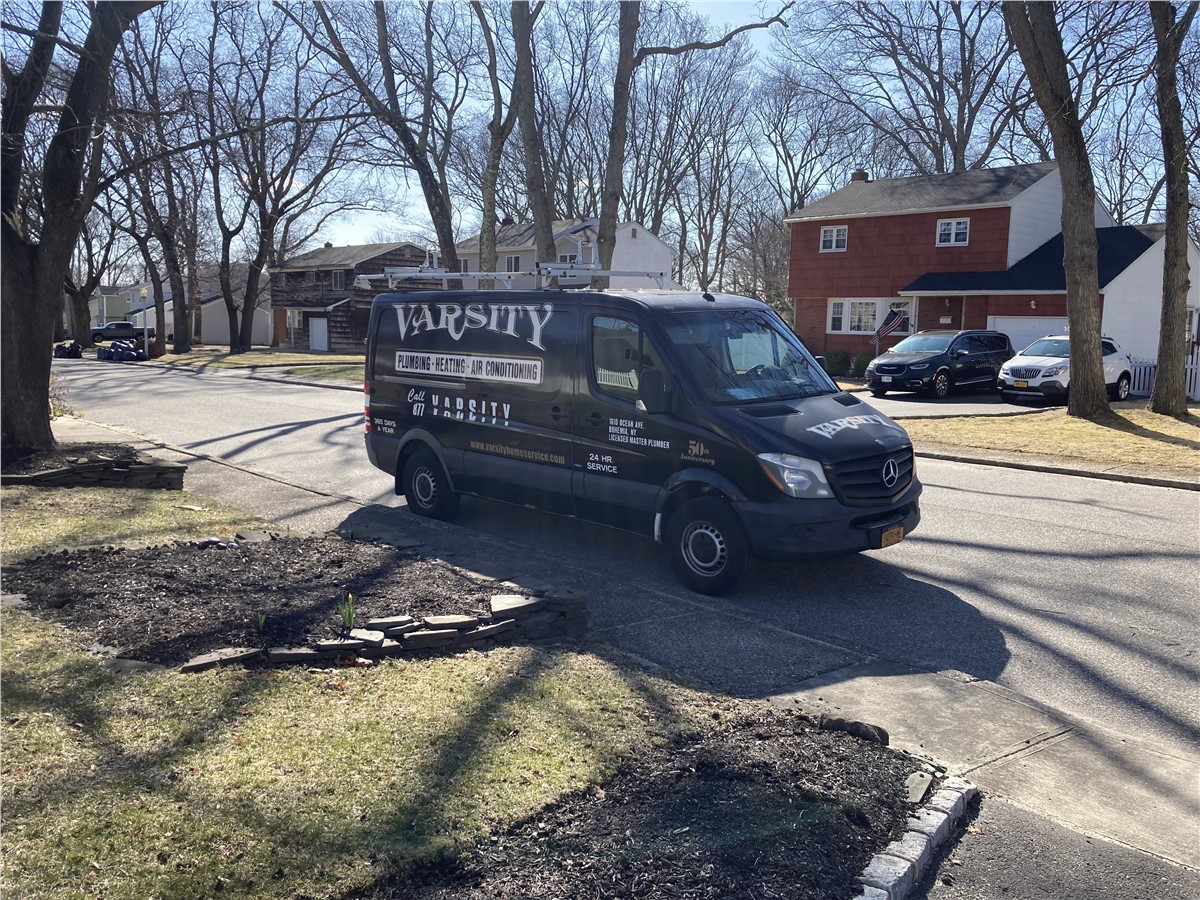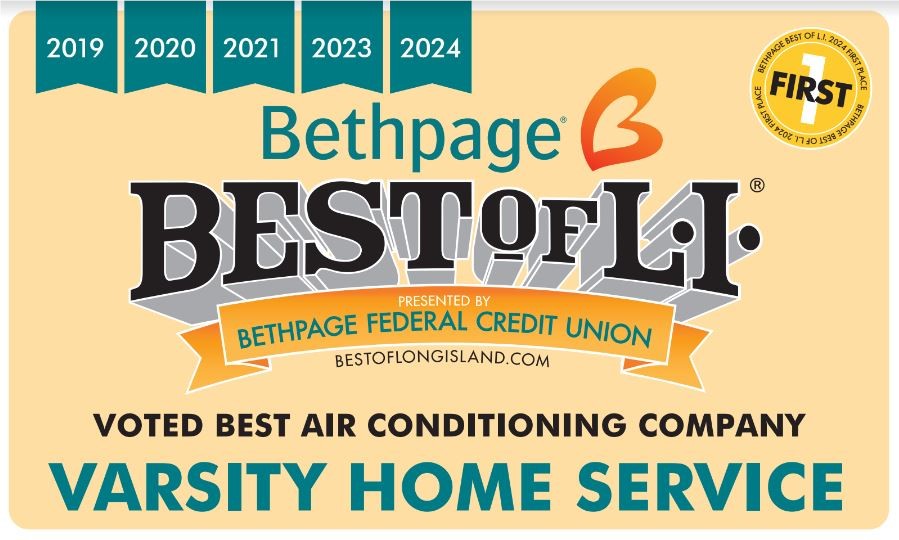
Bulky tank water heaters are a thing of the past. Read on to learn why it’s time to go tankless with an energy-efficient, demand-type hot water heater for the benefit of your home, family, environment, and wallet, too!
What is a tankless water heater?
A tankless water heater is an energy-efficient, compact unit that instantaneously provides hot water on demand and only to the extent that it is needed.
How does a tankless water heater work?
As opposed to the traditional method of storing and continually heating water inside a large tank, tankless water heaters heat up water on demand when it is needed. Upon turning on the hot water tap, the water travels through a pipe and into the unit, where it is quickly warmed by a gas burner or electric element prior to exiting for immediate use.
What are the benefits of tankless water heaters?
- Endless Hot Water: Tankless water heaters instantly deliver an unending stream of hot water, with no concern of waiting for a depleted supply to refill from a tank. This also means there's no "shower shock" effect with cold water bursts.
- Eliminates Standby Loss: When hot water is standing idle in a storage tank waiting to be used, it naturally loses its heat, which causes the unit to continuously fire up to reheat it again even if the hot water supply is not in use. This "standby loss" is an ongoing traditional water heater problem that does not exist with demand-method tankless water heaters because there is no water waiting around in a tank.
- Lower Energy Bills: According to the U.S. Department of Energy, tankless water heaters can be 24%-34% more energy efficient for homes with below-average hot water usage and 8%-14% more energy efficient for homes with above-average hot water usage. This is because the water is only heated as-needed rather than heated continually in a tank in anticipation of potential usage.
- Easier on the Planet: With minimized energy loss, reduced carbon dioxide emissions, and lower contribution to landfill waste, tankless water heaters have a lesser environmental impact than its tank-style counterpart.
- Compact Design Saves Space: Sleek, wall-mounted tankless water heaters occupy up to 80% less space than storage tank water heaters. These compact units can be installed in an inconspicuous place such as a small utility closet in a basement or garage.
- Longer Lifespan: Tankless water heaters typically last twice as long as the traditional tank-type! Because tankless water heaters do not have standing water that needs to be reheated constantly, your equipment is only put to use when it's actually needed. As a result, many tankless water heater models have a life expectancy of 20+ years. Equipment longevity can even be extended longer with routine maintenance.
- Safer for Your Home & Health: The advanced flow control of tankless water heaters prevents bacterial growth including harmful Legionella, which is a risk for the water stored in traditional tank water heaters. Also eliminated is the risk of dangerous carbon monoxide leaking into the house due to backdrafting. Tankless water heaters even help protect your home from significant water damage as well. With no storage tank, there is also no danger of a catastrophic leak that can be caused when a water storage tank ruptures and spilll gallons of water in the home.
- Special Financing and Tax Credits: Condensing tankless water heaters are certified by the federal Energy Star program for their efficiency, which means that your new unit may qualify you for federal tax credits and local rebates. Varsity Home Service also offers special financing options for this equipment to give you the flexibility to pay over time.
What are the key differences between tank and tankless water heaters? See the side-by-side comparison:

Tips for Reducing Your Water Heating Bills:
- Upgrade to a high-efficiency tankless water heater
- Have your water heater regularly maintained by a plumbing professional
- Use less hot water (e.g. wash clothes in cold water, reduce shower durations, etc.)
- Turn down your water heater’s temperature (can achieve 4-22% annual savings)
- Set your water heater’s thermostat to vacation mode when away from your home for more than 3 days
- Install low-flow fixtures (can achieve 25-60% water savings)
- Fix leaky faucets (one drip per second wastes nearly 2,000 gallons per year)
- Insulate hot water pipes (can raise water temperature 2-4° F)
- Switch to energy-efficient appliances such as washing machines and dishwashers
Start enjoying as much hot water as you need, heated only when you need it. Call Varsity Home Service to schedule a free estimate for a tankless water heater today.
Source: Energy.gov
Tags
Subscribe to Varsity Home Service's Blog







